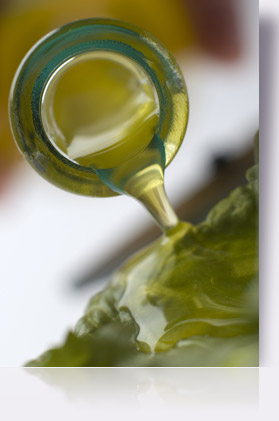Plants
The Fruit of a Unique Cultural Landscape
The argan tree (Argania spinosa), also known as the "Iron-wood tree" or "Tree of Life" is a thorny, lignified plant, the existence of which can be traced back over more than two million years. It is able to survive extreme aridity and temperatures higher than 50°C, with a lifespan of 250 to 400 years. It grows to heights of up to 10 meters, with its crown covering an area of up to 70 meters.
The argan tree only prospers in the Arganeraie, a region covering approx. 800,000 hectares, found between the southern slopes of the High Atlas and the northern slopes of the western Anti-Atlas in southwest Morocco. Attempts to create durable and fertile plantations in other regions of the world have failed so far.
The Arganeraie region is under threat from irreversible damage. The modern
agricultural industry is claiming increasingly larger areas, while other
large expanses of land are being deforested to make way for building sites
and infrastructure and to obtain firewood and food. As a result, groundwater
levels are decreasing and desertification is taking place.
In December 1998, the Arganeraie region was recognised as a "Biosphere
Reserve" by UNESCO, with the aim and in the hope of saving not only
the Arganeraie region from extinction, but also the traditions of the
Berber people associated with it.

Properties
100 ml of argan oil contains:
| Energy value | 3700 kJ / 900 kcal |
| Provitamin A and E | 63 mg |
| Protein | 0 g |
| Carbohydrates | 0 g |
| Total Fat | 100 g |
| Saturated fatty acids | 19 g |
| Monounsaturated fatty acids | 46 g |
| Polyunsaturated fatty acids | 35 g |
| Cholesterol | 0 g |
| Vitamin E / Tocopherols | 75 mg |
| Oleic acid | 48 mg |
| Linoleic acid | 35 mg |
| Fatty acids- (ISO 5508) | |
| Palmitic C16:0 | 12,20% |
| Palmitoleic C16:1 | 0,10% |
| Stearic C18:0 | 5,30% |
| Oleic C18:1 | 45,40% |
| Linileic C18:2 | 35,40% |
| Linolenic C18:3 | 0,20% |
| Arachidic C20:0 | 0,30% |
| Gadoleic C20:1 | 0,40% |
Source: Official Laboratory analysis and chemical
research of the Ministry of Agriculture and Rural Development of the Kingdom
of Morocco.
As with all natural products, results may vary from one analysis to another.

Application
A Good Deed for your Entire Body
The Argan tree is used in the production of charcoal and construction timber due to its hardness and density, while its leaves and young shoots can be used as animal fodder. The fruits consist of pulp and an extremely hard nut containing two to three kernels which are pressed to obtain the high quality argan oil.
Argan oil, also known as "Morocco's Liquid Gold", is one of the most precious oils ever. It doesn't just taste good, but is also extremely healthy. Its valuable contents make it stand out among many other oils, consisting of over 80% unsaturated fatty acids which are made up of approx. 35% linoleic acid, a double unsaturated omega-6 fatty acid which is considered to be one of the essential fatty acids. Argan oil has a very high concentration of tocopherols (vitamin E), which have an antioxidant effect, strengthening the immune system. In addition, it contains an array of substances with medicinal effects which have been proven in scientific studies.
The Berber people of the Arganeraie region have been using the oil to treat stomach and intestine problems and heart and circulatory difficulties, as well as on sunburn or to disinfect wounds, for a long time. In traditional medicine, argan oil is used in the cases of acne, chickenpox, neurodermatitis, rheumatism, joint pains and haemorrhoids. To sum it up: argan oil is ideal for maintaining health and preserving beauty!



